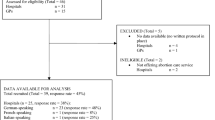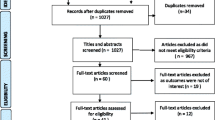Abstract
Addressing disparities in abortion access and efforts to end the global problem of unsafe abortion are key public health and human rights priorities. Optimizing the role of various health workers in supporting safe medical abortion practices and working to remove unnecessary barriers to care are key strategies that address inequities in outcomes after abortion worldwide. Medical abortion using evidence-based protocols is effective through 70 days gestation and can safely be provided by non-physician providers in outpatient settings. Removing barriers of in-office administration of mifepristone and simplifying follow-up protocols are evidence-based approaches to expanding access to medical abortion, particularly in settings where access to surgical abortion is limited. Research supports expanding the role of women themselves, as well as task-shifting among health worker teams in providing safe abortion and postabortion care. Simplifying the process of medical abortion, including allowing prescription and home administration of mifepristone and utilizing telemedicine for follow-up protocols are safe and feasible, can optimize use of health resources and improve patient experience with medical abortion.
Similar content being viewed by others
References
Papers of particular interest, published recently, have been highlighted as: • Of importance •• Of major importance
Gerdts C, Tuncalp O, Johnston H, Ganatra B. Measuring abortion-related mortality: challenges and opportunities. Reprod Health. 2015;12:87.
World Health Organization. Unsafe abortion: global and regional estimates of the incidence of unsafe abortion and associated mortality in 2008. 6th ed. Geneva: World Health Organization; 2008.
Singh S, Maddow-Zimet I. Facility-based treatment for medical complications resulting from unsafe pregnancy termination in the developing world, 2012: a review of evidence from 26 countries. BJOG, 2015. National estimates from 26 countries—including published studies and unpublished data—were used to estimate that 7 million women in the developing world were treated for complications from unsafe abortion in 2012.
Kassebaum NJ, Bertozzi-Villa A, Coggeshall MS, et al. Global, regional, and national levels and causes of maternal mortality during 1990–2013: a systematic analysis for the global burden of disease study 2013. Lancet. 2014;384(9947):980–1004.
World Health Organization. Safe abortion: technical and policy guidance for health systems: legal and policy considerations. Geneva: World Health Organization; 2015.
Bartlett LA, Berg CJ, Shulman HB, et al. Risk factors for legal induced abortion-related mortality in the United States. Obstet Gynecol. 2004;103(4):729–37.
Institute G. Facts on induced abortion worldwide. 2012.
Vlassoff M, Walker D, Shearer J, Newlands D, Singh S. Estimates of health care system costs of unsafe abortion in Africa and Latin America. Int Perspect Sex Reprod Health. 2009;35(3):114–21.
World Health Organization. The prevention and management of unsafe abortion: report of a technical working group in Geneva, 12–15 April 1992. Geneva: World Health Organization; 1992.
Ganatra B, Tuncalp O, Johnston HB, Johnson Jr BR, Gulmezoglu AM, Temmerman M. From concept to measurement: operationalizing WHO’s definition of unsafe abortion. Bull World Health Organ. 2014;92(3):155.
World Health Organization. Safe abortion: technical and policy guidance for health systems. 2nd ed. Geneva: World Health Organization; 2012.
Haider S, Stoffel C, Donenberg G, Geller S. Reproductive health disparities: a focus on family planning and prevention among minority women and adolescents. Glob Adv Health Med. 2013;2(5):94–9.
Jones RK, Kavanaugh ML. Changes in abortion rates between 2000 and 2008 and lifetime incidence of abortion. Obstet Gynecol. 2011;117(6):1358–66.
Hutcheon JA, Bodnar LM, Simhan HN. Medicaid pregnancy termination funding and racial disparities in congenital anomaly-related infant deaths. Obstet Gynecol. 2015;125(1):163–9.
Grossman D, White K, Hopkins K, Potter JE. The public health threat of anti-abortion legislation. Contraception. 2014;89(2):73–4.
Grossman D, Holt K, Peña M, et al. Self-induction of abortion among women in the United States. Reprod Health Matters. 2010;18(36):136–46.
Grimes DA, Benson J, Singh S, et al. Unsafe abortion: the preventable pandemic. Lancet. 2006;368(9550):1908–19.
Lim LM, Singh K. Termination of pregnancy and unsafe abortion. Best Pract Res Clin Obstet Gynaecol. 2014;28(6):859–69.
Snow RC, Laski L, Mutumba M. Sexual and reproductive health: progress and outstanding needs. Glob Publ Health. 2015;10(2):149–73.
Chen MJ, Creinin MD. Mifepristone with buccal misoprostol for medical abortion: a systematic review. Obstet Gynecol. 2015;126(1):12–21.
Winikoff B, Dzuba IG, Chong E, et al. Extending outpatient medical abortion services through 70 days of gestational age. Obstet Gynecol. 2012;120(5):1070–6.
Bracken H, Dabash R, Tsertsvadze G, et al. A two-pill sublingual misoprostol outpatient regimen following mifepristone for medical abortion through 70 days’ LMP: a prospective comparative open-label trial. Contraception. 2014;89(3):181–6.
Sanhueza Smith P, Pena M, Dzuba IG, et al. Safety, efficacy and acceptability of outpatient mifepristone-misoprostol medical abortion through 70 days since last menstrual period in public sector facilities in Mexico City. Reprod Health Matters. 2015;22(44 Suppl 1):75–82.
Abbas D, Chong E, Raymond EG. Outpatient medical abortion is safe and effective through 70 days gestation. Contraception. 2015;92(3):197–9.
Ireland Ld GM, Chen Ay. Medical compared with surgical abortion for effective pregnancy termination in the first trimester. Am J Obstet Gynecol. 2015;126:1.
Blum J, Raghavan S, Dabash R, et al. Comparison of misoprostol-only and combined mifepristone-misoprostol regimens for home-based early medical abortion in Tunisia and Vietnam. Int J Gynaecol Obstet. 2012;118(2):166–71.
Sheldon GF, Ricketts TC, Charles A, King J, Fraher EP, Meyer A. The global health workforce shortage: role of surgeons and other providers. Adv Surg. 2008;42:63–85.
Anyangwe SC, Mtonga C. Inequities in the global health workforce: the greatest impediment to health in Sub-Saharan Africa. Int J Environ Res Publ Health. 2007;4(2):93–100.
World Health Organization. Optimizing health worker roles to improve access to key maternal and newborn health interventions through task shifting. Geneva: World Health Organization; 2012.
Committee on Health Care for Underserved Women. ACOG Committee Opinion No. 613: increasing access to abortion. Obstet Gynecol. 2014;124(5):1060–5.
World Health Organization. Health workers roles in providing safe abortion care and post abortion contraception. Geneva: World Health Organization; 2015. The WHO Guidelines provide evidence-based recommendations on how task-shifting in abortion care can be implemented to improve disparities in access to care in low and high-resource settings.
Ganatra B. Health worker roles in safe abortion care and post-abortion contraception. Lancet Glob Health. 2015;3(9):e512–3.
Barnard S, Kim C, Park MH, Ngo TD. Doctors or mid-level providers for abortion. Cochrane Database Syst Rev. 2015;7:CD011242. This meta-analysis evaluated eight studies with over 22,000 participants to compare the safety and effectiveness of abortion provision by physicians compared to advanced level practitioners (nurse practitioners or nurse midwives) in a range of settings found no difference in the risks of medical abortion failure or complications after first trimester aspiration abortion.
Kopp Kallner H, Gomperts R, Salomonsson E, Johansson M, Marions L, Gemzell-Danielsson K. The efficacy, safety and acceptability of medical termination of pregnancy provided by standard care by doctors or by nurse-midwives: a randomised controlled equivalence trial. BJOG. 2015;122(4):510–7.
Guttmacher Institute. State policies in brief: Medication abortion (2015). Accessed: http://www.guttmacher.org/statecenter/spibs/spib_MA.pdf
Swica Y, Chong E, Middleton T, et al. Acceptability of home use of mifepristone for medical abortion. Contraception. 2013;88(1):122–7.
Chong E, Frye LJ, Castle J, Dean G, Kuehl L, Winikoff B. A prospective, non-randomized study of home-use of mifepristone for medical abortion in the U.S. Contraception. 2015. Prospective, non-randomized, open label study in the U.S. enrolled 400 women with pregnancies up to 63 days undergoing medical abortion and found home administration of mifepristone was highly acceptable to women, allowed for flexibility and decreased time missed from work.
Gold M, Chong E. If we can do it for misoprostol, why not for mifepristone? The case for taking mifepristone out of the office in medical abortion. Contraception. 2015;92(3):194–6.
Grossman D, Goldstone P. Mifepristone by prescription: a dream in the United States but reality in Australia. Contraception. 2015;92(3):186–9.
Raymond EG, Grossman D, Wiebe E, Winikoff B. Reaching women where they are: eliminating the initial in-person medical abortion visit. Contraception. 2015.
Grossman DA, Grindlay K, Buchacker T, Potter JE, Schmertmann CP. Changes in service delivery patterns after introduction of telemedicine provision of medical abortion in Iowa. Am J Public Health. 2013;103(1):73–8.
Cameron ST, Glasier A, Dewart H, Johnstone A, Burnside A. Telephone follow-up and self-performed urine pregnancy testing after early medical abortion: a service evaluation. Contraception. 2012;86(1):67–73.
Ngoc NT, Bracken H, Blum J, et al. Acceptability and feasibility of phone follow-up after early medical abortion in Vietnam: a randomized controlled trial. Obstet Gynecol. 2014;123(1):88–95.
Blum J, Shochet T, Lynd K, et al. Can at-home semi-quantitative pregnancy tests serve as a replacement for clinical follow-up of medical abortion? A US study. Contraception. 2012;86(6):757–62.
Bracken H, Lohr PA, Taylor J, Morroni C, Winikoff B. Ru ok? The acceptability and feasibility of remote technologies for follow-up after early medical abortion. Contraception. 2014;90(1):29–35.
Grindlay K, Lane K, Grossman D. Women’s and providers’ experiences with medical abortion provided through telemedicine: a qualitative study. Womens Health Issues. 2013;23(2):e117–22.
World Health Organization. Safe abortion: technical and policy guidance for health systems. 2nd ed. Geneva: World Health Organization; 2012.
Jackson AV, Dayananda I, Fortin JM, Fitzmaurice G, Goldberg AB. Can women accurately assess the outcome of medical abortion based on symptoms alone? Contraception. 2012;85(2):192–7.
Cameron ST, Glasier A, Johnstone A, Dewart H, Campbell A. Can women determine the success of early medical termination of pregnancy themselves? Contraception. 2015;91(1):6–11.
Michie L, Cameron ST. Simplified follow-up after early medical abortion: 12-month experience of a telephone call and self-performed low-sensitivity urine pregnancy test. Contraception. 2014;89(5):440–5.
Lynd K, Blum J, Ngoc NT, Shochet T, Blumenthal PD, Winikoff B. Simplified medical abortion using a semi-quantitative pregnancy test for home-based follow-up. Int J Gynaecol Obstet. 2013;121(2):144–8.
Sonalkar S, Hou MY, Borgatta L. Administration of the etonogestrel contraceptive implant on the day of mifepristone for medical abortion: a pilot study. Contraception. 2013;88(5):671–3.
Sonalkar S, Mcclusky J, Hou MY, Borgatta L. Administration of depot medroxyprogesterone acetate on the day of mifepristone for medical abortion: a pilot study. Contraception. 2015;91(2):174–7.
Sneeringer RK, Billings DL, Ganatra B, Baird TL. Roles of pharmacists in expanding access to safe and effective medical abortion in developing countries: a review of the literature. J Public Health Policy. 2012;33(2):218–29.
WHO. Health worker roles in providing safe abortion care and post-abortion contraception. Geneva: World Health Organization. Available from http://www.who.int/reproductivehealth/publications/unsafe_abortion/abortion-task-shifting/en/. 2015
Author information
Authors and Affiliations
Corresponding author
Ethics declarations
Conflict of Interest
Natalie S. Whaley and Sarah J. Betstadt declare that they have no conflict of interest.
Human and Animal Rights and Informed Consent
This article does not contain any studies with human or animal subjects performed by any of the authors.
Additional information
This article is part of the Topical Collection on Family Planning
Rights and permissions
About this article
Cite this article
Whaley, N.S., Betstadt, S.J. Update on Medical Abortion: Expanding Safe and Equitable, Patient-Centered Care. Curr Obstet Gynecol Rep 5, 48–54 (2016). https://doi.org/10.1007/s13669-016-0144-4
Published:
Issue Date:
DOI: https://doi.org/10.1007/s13669-016-0144-4




